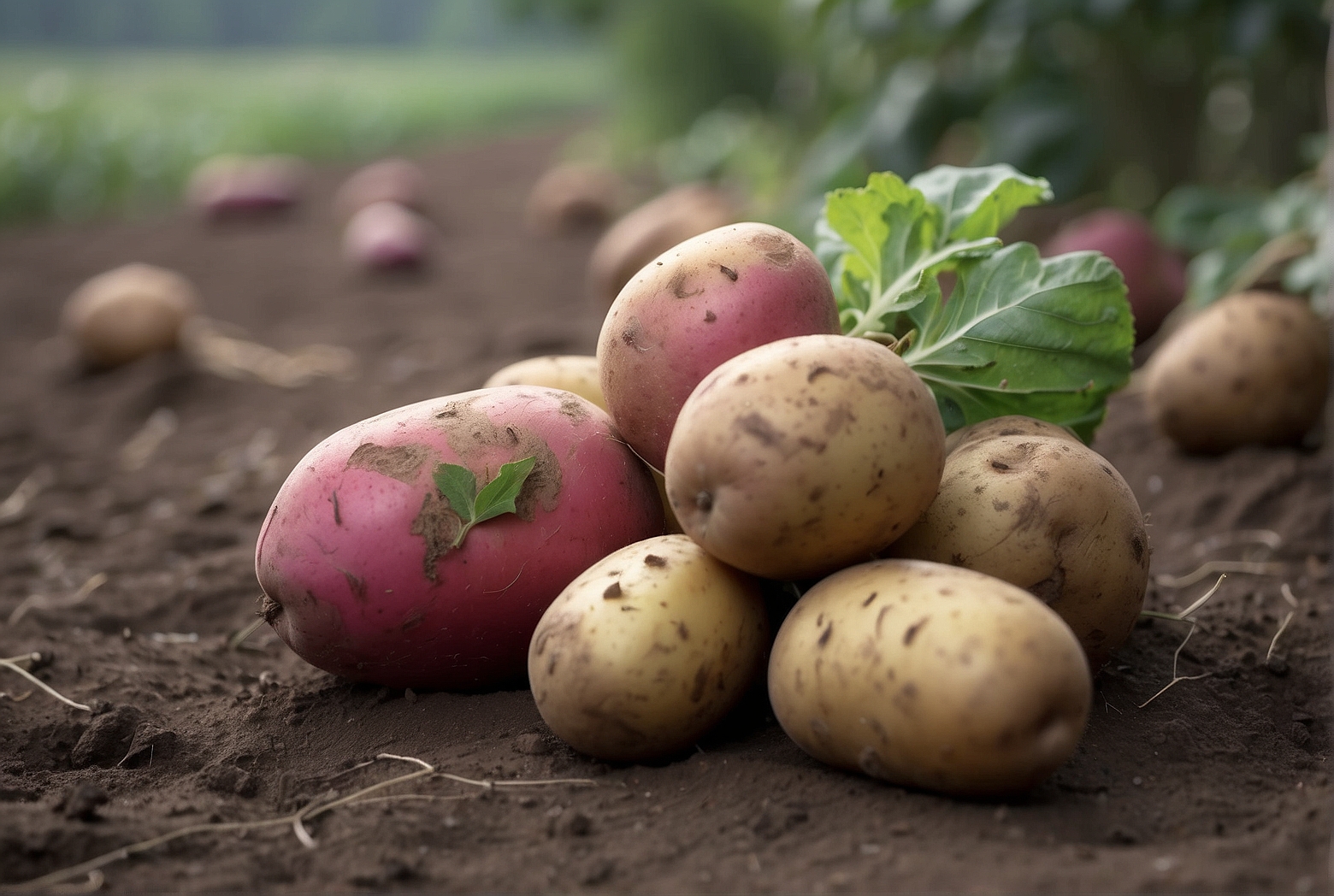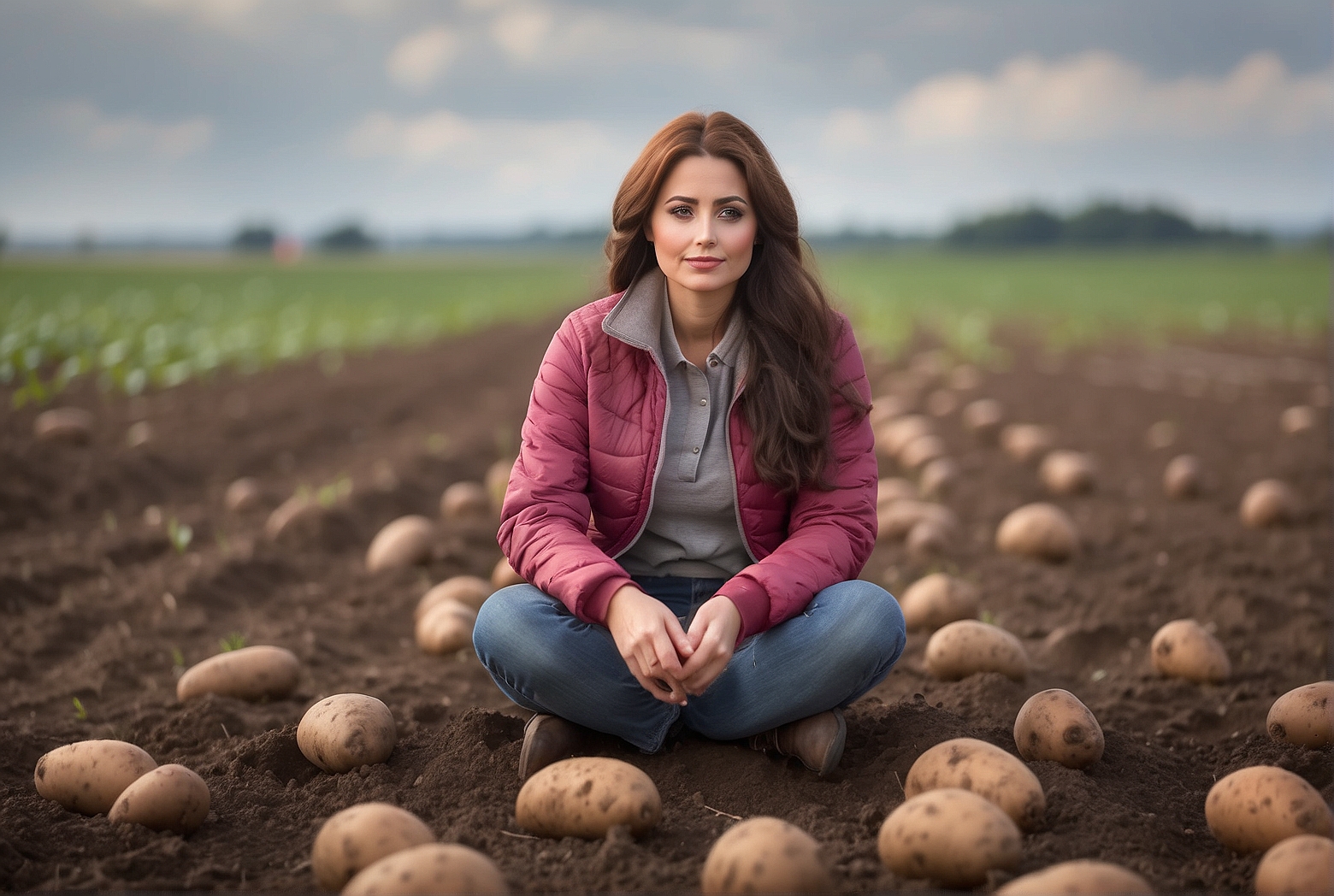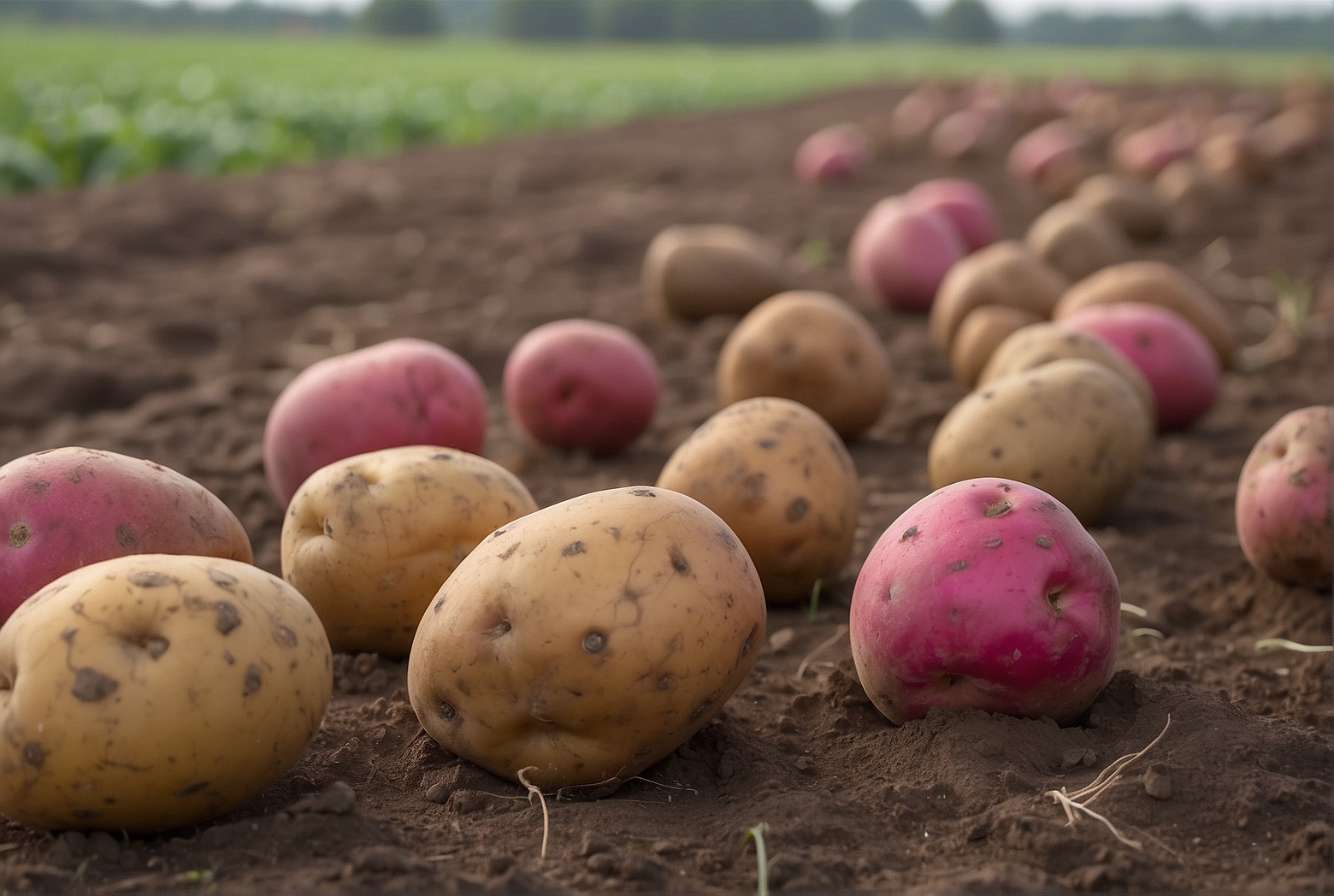Last Updated on March 31, 2024 by Tony Manhart
Are you curious about the classification of Desiree potatoes? In this article, we will explore whether Desiree potatoes are determinate or indeterminate. By understanding the growth characteristics of these popular potatoes, you will be better equipped to plan your garden and maximize your harvest. So, let’s dive in and uncover the nature of Desiree potatoes!
Definition of determinate and indeterminate potatoes
Meaning of determinate potatoes
Determinate potatoes are a classification of potato plants that have a specific growth habit and lifespan. These varieties are known for their limited height and they tend to stop growing once they reach a certain size. Determinate potatoes typically set a definitive number of tubers, mainly concentrated near the base of the plant, making them easier to harvest and manage. After the tubers have formed, the plant begins to decline and eventually dies.
Meaning of indeterminate potatoes
Indeterminate potatoes, on the other hand, refer to potato plants that continuously grow and produce tubers throughout their lifespan. These varieties have a more vigorous growth habit and can grow taller than determinate varieties. Indeterminate potatoes also tend to produce tubers along the length of the underground stems, resulting in a higher yield potential. Unlike determinate potatoes, indeterminate varieties can continue to grow and produce tubers until external factors, such as frost or disease, hinder their growth.
Characteristics of determinate and indeterminate potatoes
Growth habit of determinate potatoes
Determinate potatoes have a compact growth habit, typically reaching a height of around 2 feet. They have a bushy appearance with shorter internodes and tend to form a more contained canopy. This growth habit makes them suitable for smaller garden spaces or containers where vertical height may be limited. Determinate potato plants also have a more uniform maturation period as their growth cycle comes to an end relatively quickly.

Growth habit of indeterminate potatoes
Indeterminate potatoes, on the other hand, have a more vigorous and sprawling growth habit. They can reach heights of up to 4 feet or more, with longer internodes and larger leaves. This growth habit allows the plant to capture more sunlight and utilize more nutrients, resulting in larger overall plant size and higher yield potential. The extended growth period of indeterminate potatoes allows for continuous tuber development and a longer harvest period.
Yield potential of determinate potatoes
Determinate potatoes generally have a lower yield potential compared to indeterminate varieties. This is because determinate potatoes set a limited number of tubers near the base of the plant. While the tubers are often larger in size, the overall yield per plant may be lower due to the restricted number of tubers formed.
Yield potential of indeterminate potatoes
Indeterminate potatoes, with their continuous tuber formation throughout the growing season, have a higher yield potential. The ability to produce tubers along the length of underground stems results in a larger total yield per plant. Additionally, the extended growth period allows for the accumulation of more carbohydrates, which translates into larger tubers.
Differences between determinate and indeterminate potatoes
Plant height
One of the key differences between determinate and indeterminate potatoes is their plant height. Determinate varieties tend to be shorter, typically around 2 feet in height, while indeterminate varieties can grow much taller, reaching heights of over 4 feet or more.

Flowering and fruiting
Determinate potatoes generally have a shorter flowering and fruiting period compared to indeterminate varieties. The flowering and fruiting stage is crucial for the development of tubers. Determinate potatoes tend to set their flowers and produce tubers earlier in the growing season, while indeterminate potatoes continue to produce flowers and tubers throughout their extended growth period.
Harvesting time
Due to their growth habit and tuber formation pattern, determinate potatoes have a more defined harvesting time. Once the tubers have formed near the base of the plant, they can be harvested all at once. Indeterminate potatoes, however, have a longer harvesting period as tubers continue to form along the underground stems. This may require multiple harvests, with early maturing tubers being harvested first, followed by later maturing ones.
Resistance to diseases and pests
The determinate and indeterminate classifications do not necessarily affect the resistance of potatoes to diseases and pests. Resistance to specific diseases or pests is determined by the variety and genetic traits, rather than whether the potato plant is determinate or indeterminate.
Storage capabilities
In terms of storage capabilities, determinate potatoes are often favored for their ability to store well. As these varieties have a shorter growth period, the tubers tend to have a thicker skin, which makes them more suitable for long-term storage. Indeterminate potatoes, with their extended growth period, may have thinner skins and may not store as well as determinate varieties, requiring more immediate usage or shorter-term storage options.
Desiree potatoes: Determinate or Indeterminate?
Background information on Desiree potatoes
Desiree potatoes are a popular and well-known variety that originated in the Netherlands. They are prized for their favorable taste, appealing appearance, and versatility in cooking. Desiree potatoes are known for their ability to grow well under different climate conditions and are widely cultivated in various regions around the world.
Debate on determinate versus indeterminate classification for Desiree potatoes
The classification of Desiree potatoes as either determinate or indeterminate has been a topic of debate among potato enthusiasts and experts. The growth habit and characteristics of Desiree potatoes have led to differing opinions regarding their classification.
Evidence supporting determinate classification for Desiree potatoes
Proponents of the determinate classification argue that Desiree potatoes exhibit characteristics typically associated with determinate varieties. They assert that Desiree potatoes have a limited plant height, reaching around 2-3 feet, and stop growing once tubers have formed near the base of the plant. The relatively compact growth habit and more uniform maturation period support the determinate classification.
Evidence supporting indeterminate classification for Desiree potatoes
Those advocating for the indeterminate classification of Desiree potatoes highlight the continuous growth and tuber development observed in this variety. They assert that Desiree potatoes can produce tubers along the length of underground stems, similar to indeterminate varieties. The prolonged harvest period and potential for higher yields also align with the characteristics typically associated with indeterminate potatoes.
Conclusion on the classification of Desiree potatoes
While the debate on the classification of Desiree potatoes continues, it is important to recognize that the determinate or indeterminate label does not solely define the characteristics of a specific variety. Desiree potatoes exhibit traits that can be seen in both determinate and indeterminate types, making their classification complex. Growers and gardeners should consider a combination of specific variety traits and growing practices when cultivating Desiree potatoes.
Implications of determinate or indeterminate classification for Desiree potatoes
Planting and management considerations
The classification of Desiree potatoes as either determinate or indeterminate can have implications for planting and management. If Desiree potatoes are determined to be determinate, their compact growth habit and shorter maturation period may influence optimal planting spacing and timing. Indeterminate classification, on the other hand, may require adjustments to accommodate the longer growth period and potential for higher yields.
Harvesting and storage considerations
The classification of Desiree potatoes can impact harvesting and storage practices. If Desiree potatoes are deemed determinate, growers can anticipate a more defined harvesting time, allowing for efficient and timely harvest. Determinate potatoes, with their thicker skin, may also have better storage capabilities, enabling longer-term storage options. On the other hand, if Desiree potatoes are considered indeterminate, growers may need to plan for a more extended harvesting period and shorter-term storage options.
Crop rotation considerations
Determining whether Desiree potatoes are determinate or indeterminate can inform crop rotation strategies. If Desiree potatoes are classified as determinate, they may fit well in a crop rotation plan where shorter-lived plants are desired in a specific planting area. Indeterminate classification may require different crop rotation considerations due to the potentially longer lifespan and growth period of Desiree potatoes.
Conclusion
The determinate versus indeterminate classification of Desiree potatoes is a topic of debate and warrants careful consideration. The specific growth habit and characteristics of Desiree potatoes exhibit traits found in both determinate and indeterminate varieties, making their classification complex. Regardless of their classification, Desiree potatoes remain a popular and versatile choice for growers and consumers alike. Understanding the implications of their growth habit can assist in optimizing planting, management, harvesting, and storage practices.
Tony Manhart is a passionate gardener who has been tending to gardens for over 20 years. He takes pride in creating beautiful outdoor spaces with plants, trees, and shrubs that can thrive in any environment. He loves to share his knowledge with others and has taught classes on gardening basics and advanced techniques. He is committed to sustainability, using natural and organic methods to create and maintain gardens. He also works with local organizations to create green spaces for communities. When he’s not gardening, Tony enjoys hiking, reading, and spending time with his family.


